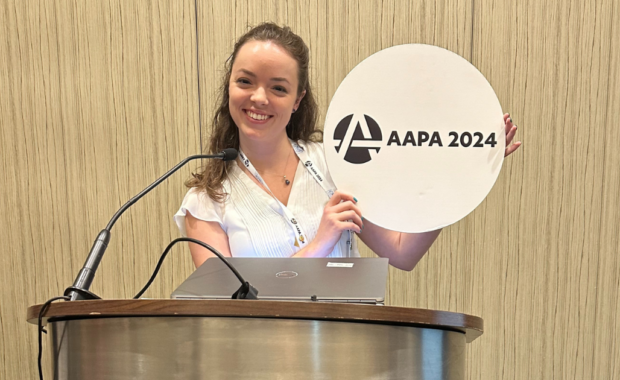New Data: PA Students Have Diverse Backgrounds, Life Experiences
AAPA Student Survey Moves Beyond Asking About Gender, Race, Ethnicity
January 21, 2022
By AAPA Research Department
When considering whether a group can be considered diverse, what likely comes to mind is the race, ethnicity, and gender of those in individuals within the group. While these are important factors, there are other crucial elements of diversity – such as life experience and background.
According to the Agency for Healthcare Research and Quality, cultural competence in healthcare refers to “the ability of systems to provide care to patients with diverse values, beliefs and behaviors, including the tailoring of healthcare delivery to meet patients’ social, cultural, and linguistic needs.”1
When patients are treated by healthcare professionals who have life experiences more closely aligned with their own, patients “tend to be more satisfied with their care and to adhere to medical advice,” according to the American Association of Medical Colleges.2
To gain a better understanding of the demographics of the PA student population, AAPA’s Research Department conducts an annual Student Survey. In 2021, AAPA moved beyond asking students just about their gender, race, and ethnicity. The AAPA Student Survey included questions about PA students’ backgrounds to gain insights into the diversity of life experiences among new PAs joining the workforce.
[Support AAPA’s original research on the PA profession – join or renew today]
- The majority of PA students identify as women and are white and non-Hispanic.
The gender gap continues to widen, as 77.8% of PA students identified as female/woman, and 78% indicated they were assigned female at birth.
A small number of PA students are sexual or gender minorities: 7.0% indicated that they were a sexual or gender minority, and 0.2% identified as genderqueer, nonbinary, gender non-conforming or transgender. Additionally, 2.9% are gay or lesbian, and 4.3% are bisexual.
The majority of PA students (76.2%) are white and non-Hispanic, while 3.25% are Black/African American, 8.6% are Hispanic, and 3.9% are two or more races.
- PA students have diverse life experiences.
The 2021 AAPA Student Survey also asked about group membership. Among PA students:
- 23.0% are the first generation to attend college in their family;
- 13.9% came from a family that received public assistance or are currently receiving public assistance;
- 12.8% are first-generation American;
- 9.2% were born in a country other than the United States;
- 3.1% were part of a college or university underrepresented minority pipeline for health careers;
- and 1.7% have a diagnosed physical or mental impairment that substantially limits their participation in educational experiences and opportunities offered by their college.
In total, 44.6% of all PA students identified in one of these groups, indicating that many PA students have diverse backgrounds. AAPA will continue to look at experiences such as these and more as we consider issues related to health equity and inclusivity in healthcare.
| PA Student Area of Diversity | Percent of Respondents |
| Group Membership | % |
| Identify with a group with diverse life experiences | 44.6 |
| I am the first generation in my family to attend college (neither my mother nor my father attended college) | 23.0 |
| I am from a family that receives/received public assistance (e g , Aid to Families with Dependent Children, food stamps, Medicaid, public housing) or I receive public assistance | 13.9 |
| I am a first generation American (neither of my parents were born in the United States but I was born in the United States) | 12.8 |
| I was born in a country other than the United States | 9.2 |
| I am a sexual or gender minority (e g , LGBTQ+) | 7.0 |
| I was part of a college/university underrepresented minority pipeline for health careers | 3.1 |
| I have a diagnosed physical or mental impairment that substantially limits my participation in educational experiences and opportunities offered by a college | 1.7 |
| None of the above | 55.4 |
References
1 https://psnet.ahrq.gov/perspective/cultural-competence-and-patient-safety
2 https://store.aamc.org/accessibility-inclusion-and-action-in-medical-education-lived-experiences-of-learners-and-physicians-with-disabilities.html
You May Also Like
Study Examines Impact of Depression on PA Professional Fulfillment
5 Important Things to Know About Mental Illness and Suicidal Ideation
Barriers to Care: Four PAs Talk About Serving Rural Communities During the Pandemic
Thank you for reading AAPA’s News Central
You have 2 articles left this month. Create a free account to read more stories, or become a member for more access to exclusive benefits! Already have an account? Log in.



